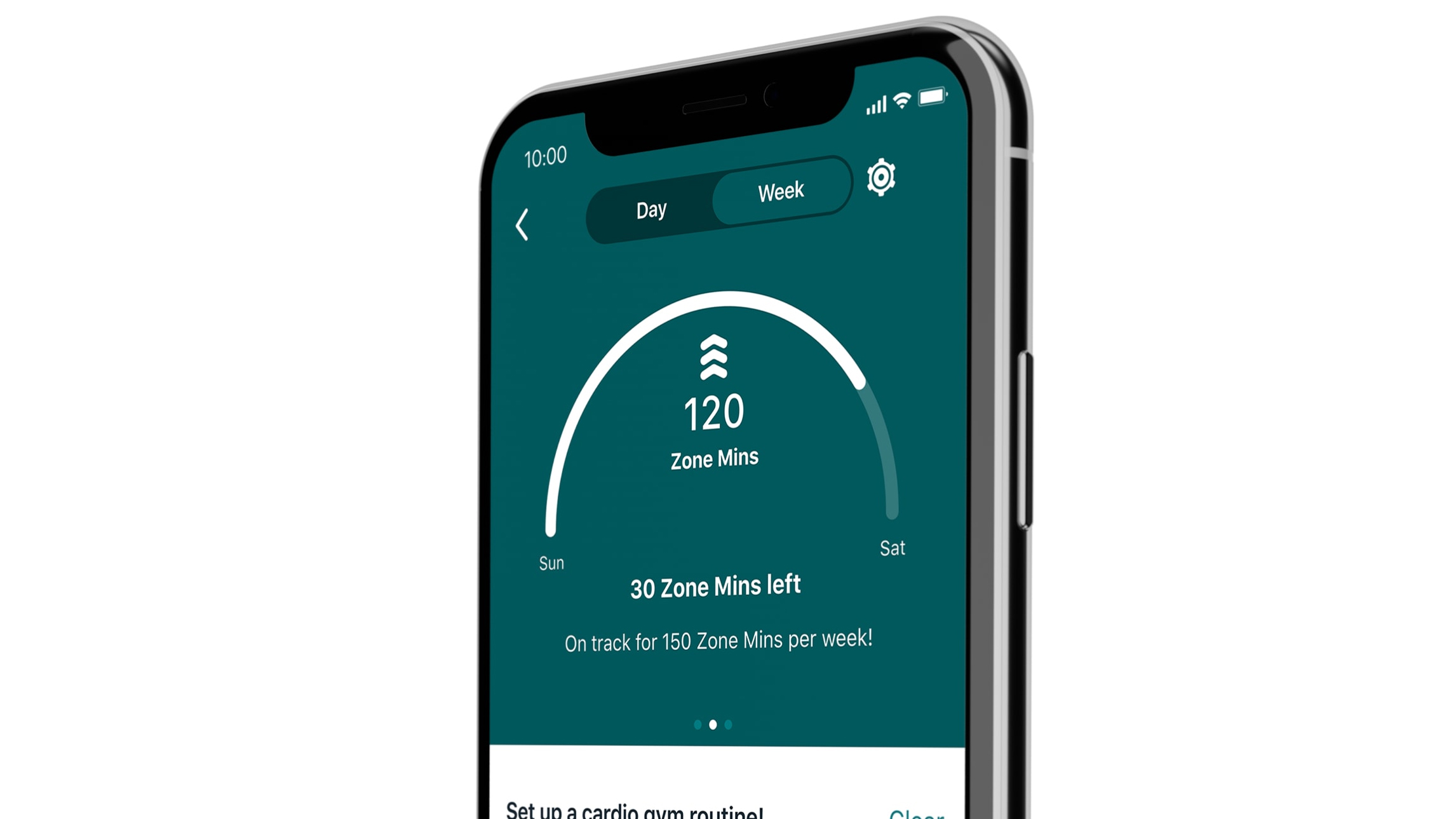What are Fitbit Active Zone Minutes?
Tracking your heart rate—using a device like a Fitbit—can help you monitor the intensity of your cardio workouts


Pedometers count each step you take—whether you’re climbing a mountain or taking out the trash. All movement is good movement, but to improve cardiovascular fitness, you need to get your heart pumping.
That’s where features like Fitbit Active Zone Minutes can come in handy, as they focus on monitoring your heart rate, rather than your steps. The tool tracks the amount of time you're spending in an elevated heart rate zone, which reflects the intensity of your workouts.

Active Zone Minutes are logged whenever the user’s heart rate is elevated, and more minutes are awarded for higher-intensity workouts. Users earn one Active Zone Minute for each minute spent in the fat-burning zone and two Active Zone Minutes per minute spent in the cardio zone.
This feature is cleverly personalized, too: your device uses your typical resting heart rate and your age to calculate your individual fat-burning, cardio and peak zones.
- Read more: Which Fitbit should you get?
What are heart rate zones?
Heart rate zones play a big role in Fitbit’s Active Zone Minutes, so it’s useful to try and understand them. These zones reflect how intensely you’re exercising and they’re usually written as a percentage of your maximum heart rate. The American Heart Association (AHA) uses a formula to calculate a generalized maximum recommended rate based on age—to find yours, just subtract your age from 220.
For example, using this formula the maximum recommended heart rate for a 30-year-old is 190bpm. To reach a 70 percent heart rate zone this person would need to elevate their heart rate to 133bpm.
On a Fitbit, your fat burn zone is calculated as between 50 percent and 69 percent of your maximum heart rate, your cardio zone as between 70 percent and 84 percent of your maximum heart rate and your peak zone as greater than 85 percent of your maximum heart rate.
Get the Fit&Well Newsletter
Start your week with achievable workout ideas, health tips and wellbeing advice in your inbox.
Why are heart rate zones important?
NASM-certified fitness instructor Roz Mays says that understanding your heart rate can play a big role in improving your cardio fitness.
“Your heart, like other muscles, needs practice functioning in high-stress environments,” she says. “Tracking your heart rate is one way to understand how much stress your heart is in. Using a device may be helpful in giving you real-time data.”
Mays suggests taking a balanced approach to selecting target heart rates. “In general, it's a good idea to keep your heart above your resting rate so your body learns how to adapt to stressful situations. Pay attention to which activities raise your heart rate and keep interspersing those with lower intensity movements,” she says.
Fitbit sets you a default goal of 150 Active Zone Minutes a week. This is based on recommendations from the AHA, which suggests 150 minutes of moderate activity, 75 minutes of intense activity, or a combination of moderate and intense activity each week. Don’t sweat it if that feels too ambitious—you can customize your Active Zone Minutes goal in the Fitbit app.

NASM-certified Roz “The Diva” Mays is a personal trainer and fitness educator. Based in New York City, she specializes in helping non-traditional athletes overcome gym-timidation through pole dancing, TRX, mobility work and strength training.
Are Fitbit Active Zone Minutes accurate and effective?
Using a Fitbit to log your Active Zone Minutes simplifies the process of tracking your workouts. And watching those numbers tick up can help with motivation, too.
Active Zone Minutes can also help the wearer understand the intensity of their workouts. If an activity isn’t vigorous enough to boost your heart rate, it won’t be logged as active time. Once you’re in the zone you’ll reap all the benefits of a good workout.
According to Mays: “High-intensity workouts can deliver all the benefits of a leisurely walk, but in half the time; they can also help prepare the body for activities that require agility, like pole-dancing and soccer.”
The accuracy of the Active Zone Minutes depends on a variety of factors, such as where you’re wearing the band and how closely it measures your heart rate. But you should see general trends in the data that will help you track how intensely you’re working out.
Need some help picking a new sports band? See our guide to the best running watches
Madeline Muzzi is a lifestyle writer based in Brooklyn, New York. Her bylines include The Cut, Grub Street, and Eater. Madeline is a marathon runner, weightlifter, and amateur yogi who loves almost every type of physical activity but secretly despises a day hike.
-
 I do these two things every day to stay fit and healthy, says the newest star trainer on Chris Hemsworth's fitness app
I do these two things every day to stay fit and healthy, says the newest star trainer on Chris Hemsworth's fitness appHere's how Centr's Korey Rowe trains for longevity
By Sam Rider Published
-
 I thought sports weren't for me, until I realised they're a game-changer for ticking off cardio
I thought sports weren't for me, until I realised they're a game-changer for ticking off cardioI swapped HIIT and running for tennis—and I've never felt better
By Alice Porter Published